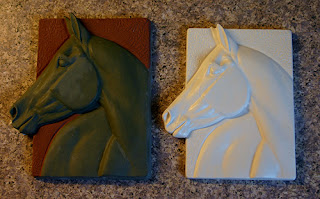
One of the more difficult aspects of running a home-based business is maintaining a reasonable balance between work life and the rest of your life. Certainly working at home has advantages – no commuting, casual dress, flexible hours. But there is also the challenge to create some kind of boundary between life and work, since the normal boundaries (like commutes, dress codes and set hours) are absent. I suspect this is even more an issue for people like me who are fortunate enough to do what they love for a living. It is too easy to plunge into work, and whatever creative puzzle I have set for myself, and forget that there is a wide world out there beyond my studio walls.
Perhaps that is why I enjoy the fall and the return of each new school year. It imposes some structure to my day, separating out my work and my family life a little more distinctly. And it makes me leave my studio, which I find harder and harder to do as I get older.
So this past weekend I set down my clay and underglazes, and went with my family to the county fair. Our friends the Thompsons had some chickens entered, and we had promised to go cheer them on. I forgot to get their exhibitor number, but I was confident that I could pick the chickens out. The Thompsons keep my horse Sprinkles, so I see the chickens almost every day. Sadly, I was forced to admit that my chicken-picking skills were somewhat lacking - one brown speckled hen looked much like the any of the others! But other than that, we had a grand time. My sons are now old enough to go on the rides alone, so that we merely had to shepherd them from line to line and watch. Since I fall in the category of “risk-adverse”, this was a relief!
Our trip also confirmed my belief that, if you want to find really odd-colored horses, the best places are trail rental facilities and pony rides. For some reason, the oddest horses end up in those venues. And the pony rides at the fair didn’t disappoint, unless you count the fact that I had to leave my malfunctioning camera at home and couldn’t get good pictures. (That’s the other sure way to find an oddity – show up without a camera!) This particular group had a tobiano-and-leopard pintaloosa. The white areas of the tobiano pattern covers other colors and patterns (even the stripes on a zebroid), so it was reasonable to expect that a horse that inherited leopard and tobiano would look like a tobiano with the leopard pattern where the dark patches should have been. But patterns sometime interact in odd ways beyond just overlapping, so until I saw one I could not be sure. Up until this past weekend, all the tobiano pintaloosas I had seen were either varnishes or blankets. But there in the pony ride line-up was a black leopard tobiano pintaloosa, and he looked just as I had expected. (In a line-up of six ponies, there were a red roan, a red silver, two tobianos, an amber champagne and the pintaloosa. It makes one wonder if the craze for unusual colors has tipped the balance of color in the general horse population.) I left trying to memorize the details of his color, just sure it would look great on something shiny!
On Sunday we attended the church picnic and then returned home to work on some household projects. When I heard my husband working in the garage, I was sure he and my sons were building the tile press I had requested a few months ago. The thought gave me renewed energy to finish my own household chores, imagining how fun it would be to experiment with my new toy when I returned to work on Monday. It was only later that I found that it was not a tile press at all, but rather a trebuchet. The guys seemed to think that being able to fling a water balloon up over the tree and onto our neighbor Mike’s house was much more important that my being able to make tiles more efficiently.
So that was how I spent my weekend away from work. I didn’t finish my posts about moldmaking (I will here shortly), but I did return to the studio recharged and ready for what should be a busy week. I didn't get my new tile press, but if the studio is ever under attack, I now have a suitable siege weapon!


























